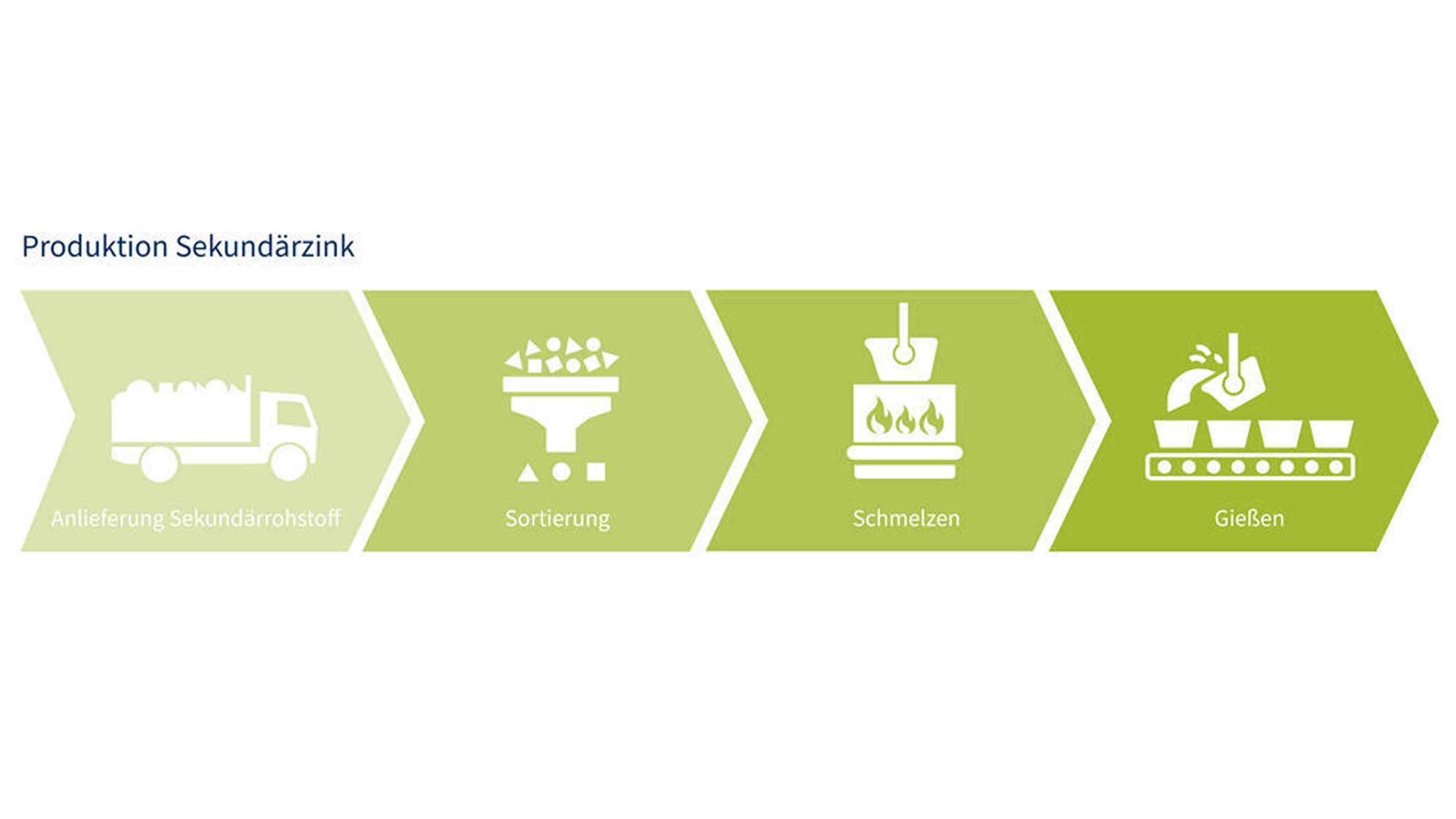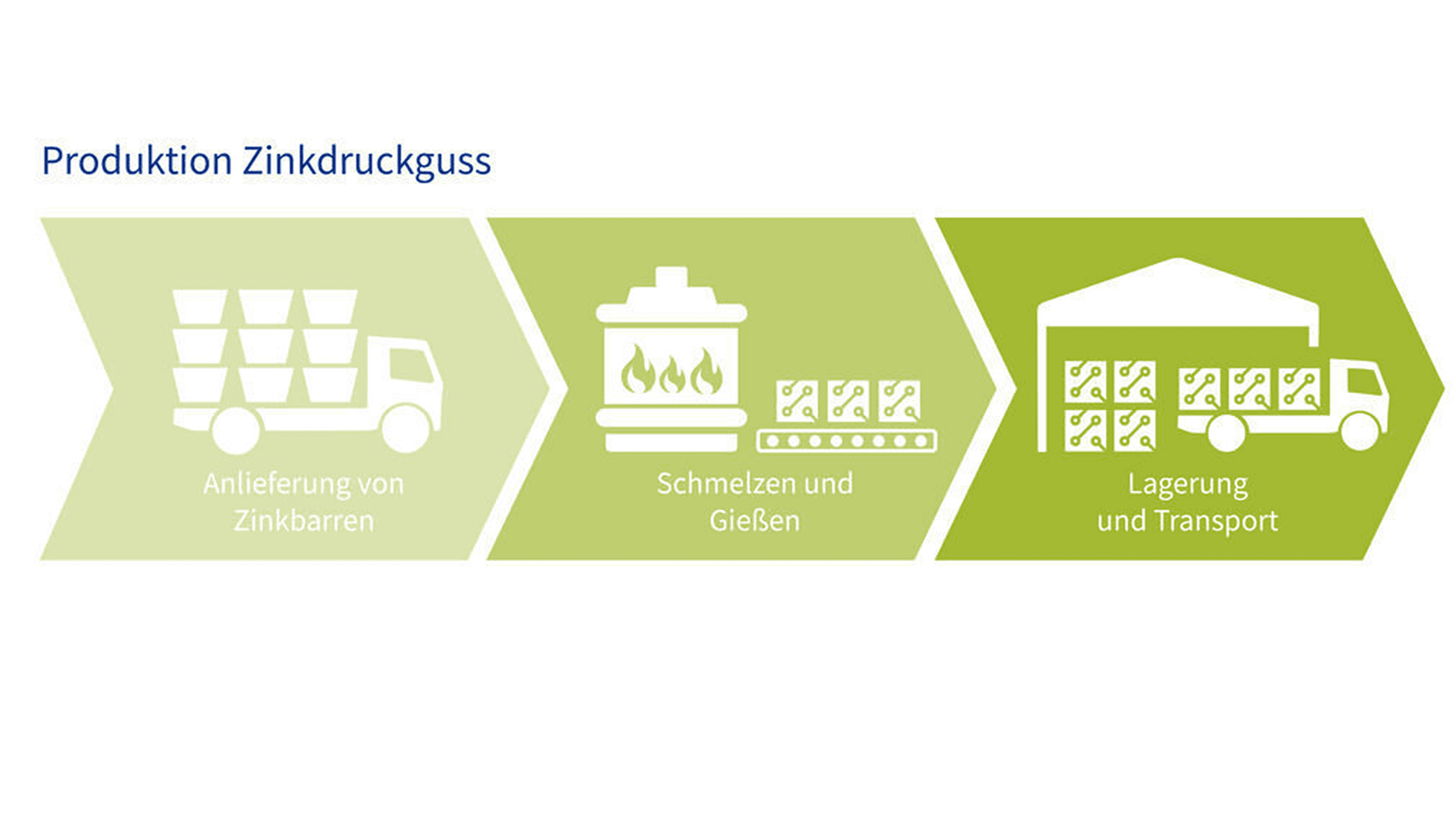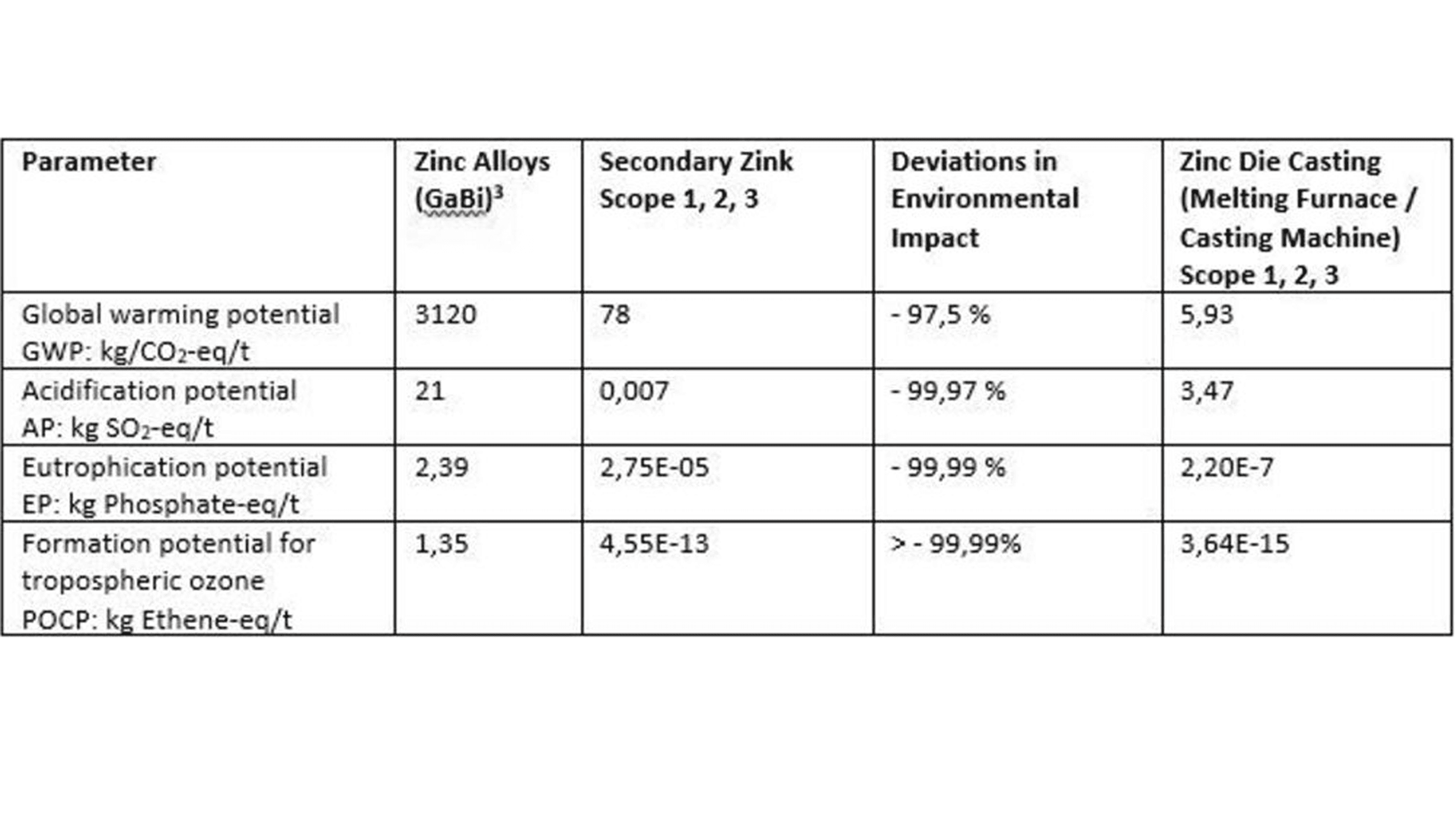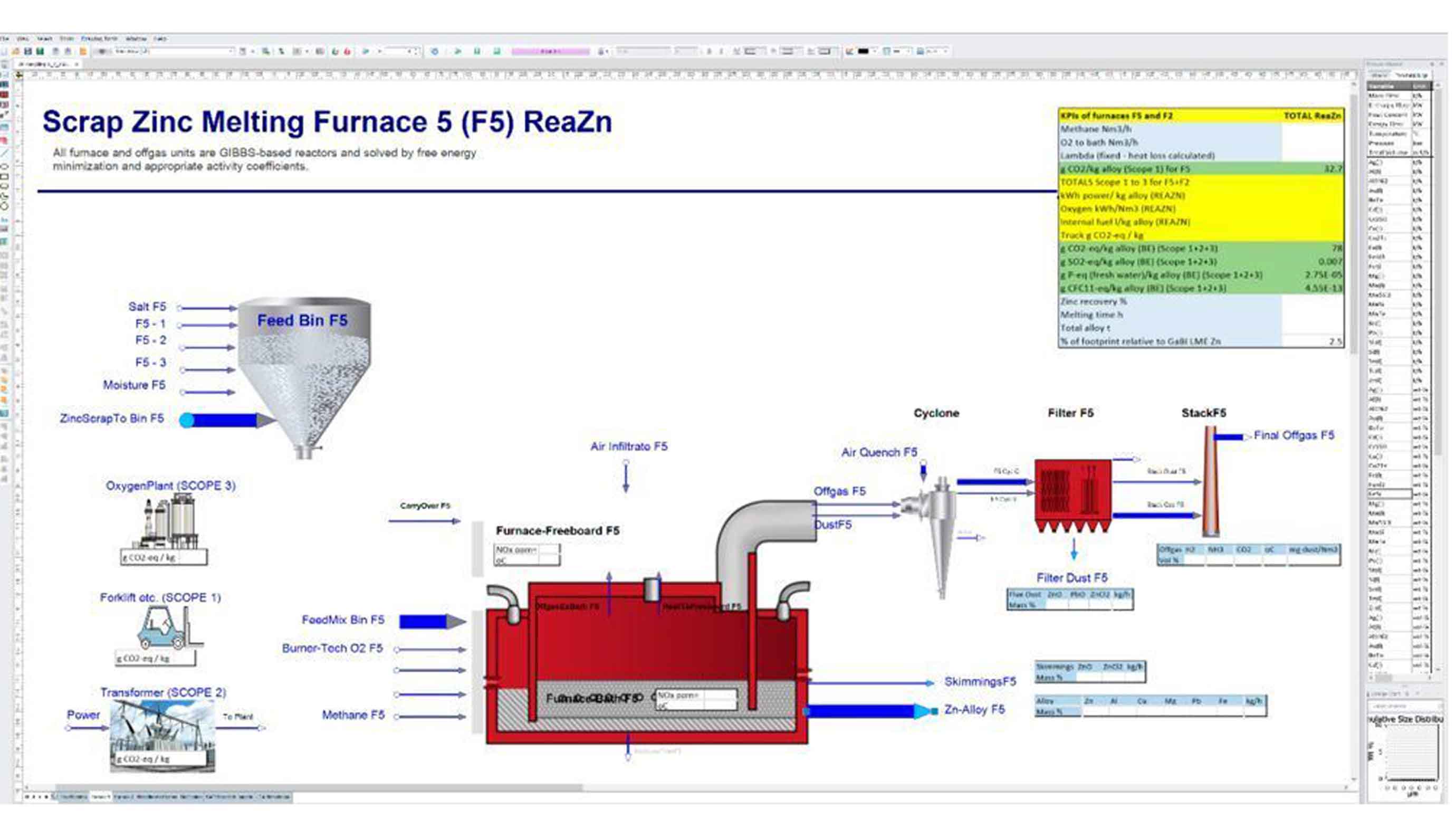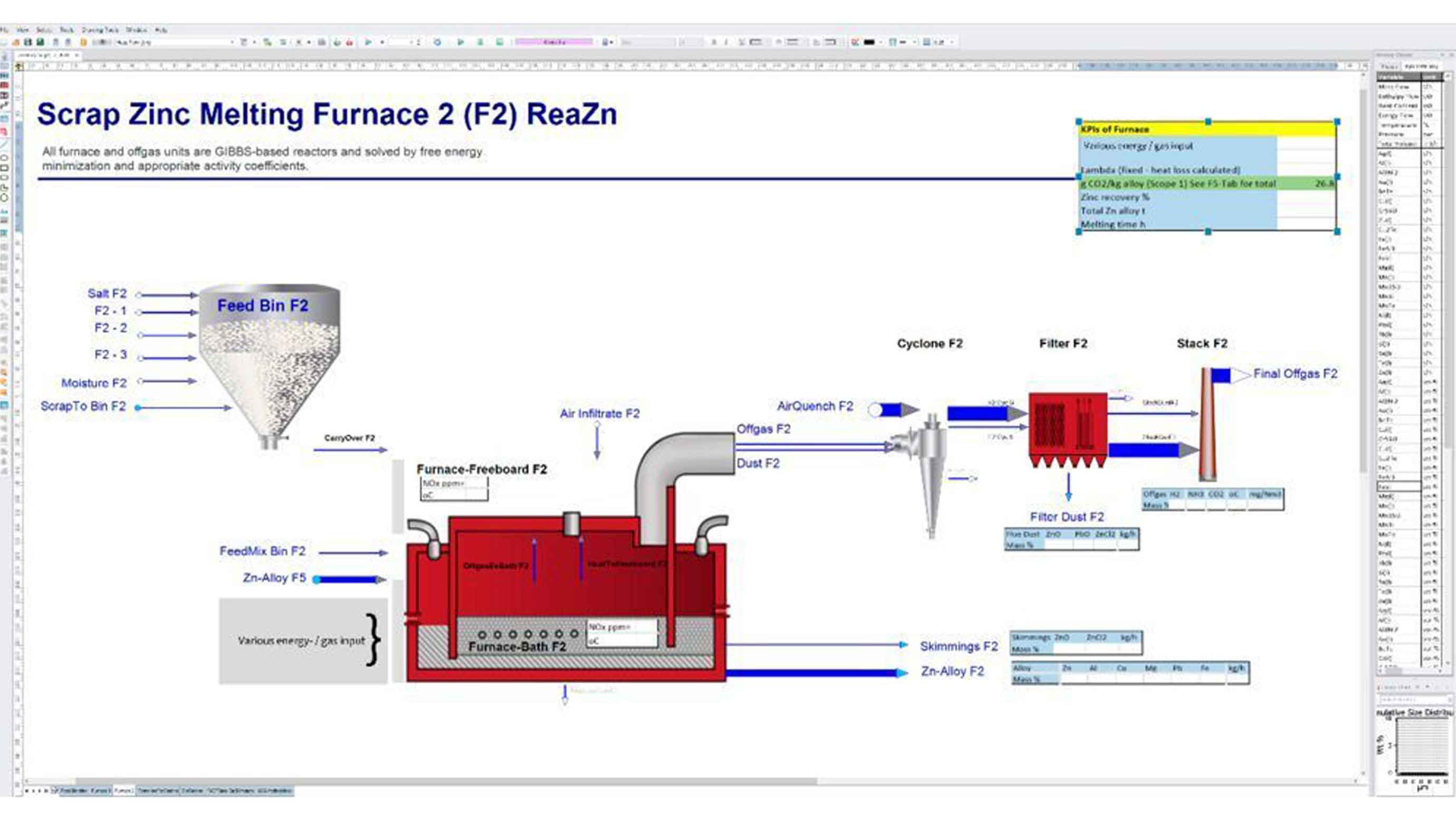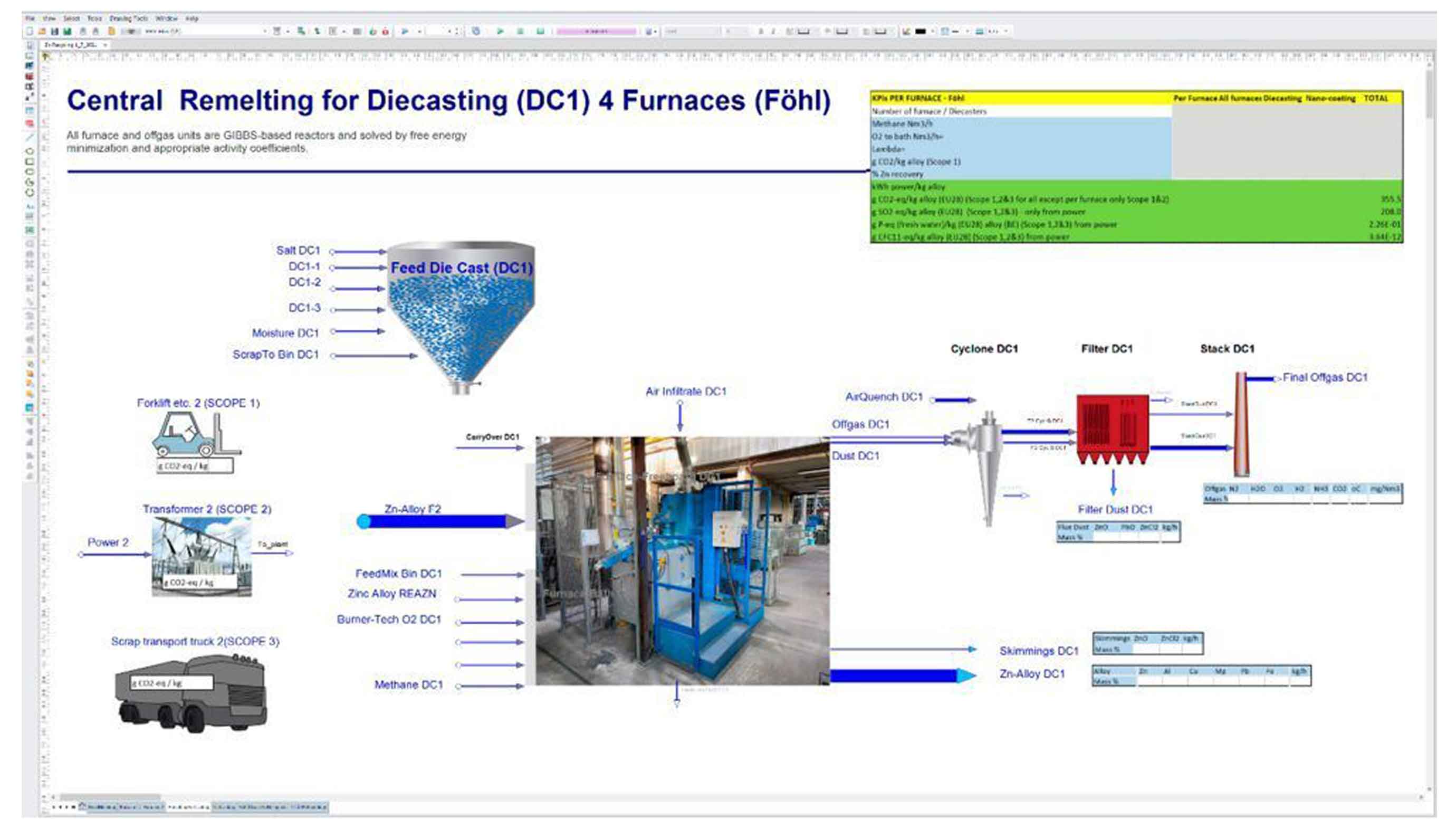The material zinc makes this scenario possible - it can be used in a variety of ways and has the appropriate material properties for the use of technological products in the sectors automotive / mobility, electrical engineering, steel and infrastructure construction, architecture, medical technology, pharmaceuticals, health, food, household, etc. - Zinc is used because of its excellent possibilities to be deconstructed and recycled. Zinc is "used" and not "consumed".
For the implementation of these goals, various considerations are drawn upon. In addition to key figures on recycling rates for a material and recyclate content in products, the life cycle assessment is an instrument for illustrating the environmental impact of products. In the future, life cycle assessments will become an increasingly important decision-making basis for investors, purchasers, project decision-makers, etc., in order to make a material selection for a specific component, for products, plants and other major projects. To optimally design supply chains and production processes, it is imperative to rigorously map these supply chains with simulation tools to generate physics-based environmental data.
Environmental Impact Supply Chain - Alloy / Zinc Die Casting
The presentation of the environmental impact of zinc alloys in the supply chain of zinc die casting with the method of simulation-based, physical life cycle assessment allows, among other things, the presentation of the difference in the environmental impact of zinc alloys based on SHG fine zinc (special-high-grade / primary zinc) compared to secondary zinc (recycled zinc) with defined proportions of recyclate. In order to optimize supply chains and production processes, it is imperative to rigorously map these supply chains with simulation tools in order to generate physics-based environmental data. Environmental balance has been created with the simulation program HSC-SIM, which unlike life cycle assessments according to EN 14040 or environmental product declarations (EPD) according to EN 15804, offers the possibility to show a balance of the entire supply chain from primary zinc / secondary zinc and the zinc die casting process to the surface treatment / passivation of zinc die castings. For this purpose, the simulation program maps a "digital twin" of the processes with the specific energy consumption data and the resulting greenhouse gas (GHG) emissions. [Figure 1, 4-7] This methodology has been successfully applied several times in various processes for the production of metals in different industries in the field of Circular Economy [2-5]. The data obtained can be used to generate a product EPD if required. The result provides information on the CO2 footprint (GWP) and other environmental impacts (EP, AP, POCP, see Table 1) for primary and secondary materials. This study was carried out by the Initiative ZINK with the support of Prof. Dr. Dr. h.c. mult. Markus A. Reuter, TU Bergakademie Freiberg, and the companies REAZN S.A., Luxembourg and Adolf Föhl GmbH + Co KG, Rudersberg.Life cycle assessment and methodology
Life cycle assessment (LCA) has established itself in recent decades as an important tool for the ecologically oriented planning and design of products and will play an important role in the evaluation of materials and products in the future. As a scientifically based tool, it allows a comprehensive assessment and thus an optimization of the environmental impact. The essential characteristics of LCA include the consideration of the environmental impact, extended by the view of the entire life cycle, from the extraction of a raw material to its disposal or preparation for reuse of the material. In LCA, all relevant environmental impacts are considered, as far as quantifiable. The preparation of a life cycle assessment is usually carried out in several steps, and the ISO 14040 system has become internationally accepted.1) In this study, a simulation methodology was used for LCA, [1-5] which allows a process-based consideration of the environmental impact. Recycling of metals occupies a key position in securing resources for maintaining and expanding technologies and infrastructure in the future. With regard to the issue of the use of secondary raw materials for zinc die casting, no life cycle assessment studies exist to date. The simulation methodology used, with the software HSC-SIM2), version 10.2, makes it possible to carry out time-realistic calculations of the impact categories in the material production of zinc alloys and subsequent processing in the die casting process based on specific production conditions, instead of generic data.The advantage of this simulation methodology lies in the possibility of updating the data at any time with the support of a digital twin of the production processes. This means that the performance and the improvement or deterioration of the environmental impact of a production process can be shown virtually at the push of a button. In addition, the simulation can be used to calculate variants / scenarios, for example, to check the effects of changes in the process or the implementation of innovations and investments in production for their environmental impact (impact categories, GHG emissions). This type of environmental impact accounting is a suitable tool to accompany the goal of reducing CO2 and other impact categories on the way to CO2 neutrality. The concept of CO2 neutrality "avoid - reduce - compensate" can be followed. The simulation methodology provides a suitable tool to follow this concept down to the details of the manufacturing process and to plan and implement appropriate measures. It also shows at which point in the process the use of renewable energy has the greatest effect on the footprint. However, it also shows the limits of supposedly sensible investments and innovations in the circular economy as well as the thermodynamically determined limits.
System Boundaries
The HSC-SIM software for simulation-based engineering as a digital twin allows the individual inclusion of all production steps (Fig. 4-7) including the energy input and output as well as the performance parameters of the production units, related to the unit ton / zinc alloy. In the study, the following production processes have been considered as the system boundary. The calculations performed are partly based on GIBBS-free energy minimization.
Environmental Impact of Primary Zinc (SHG)
Use of available LCA data on primary zinc and the zinc alloys ZAMAK primary alloy (e.g. IZA) using the assumption of an energy mix according to GaBi database.
Environmental Impact Secondary Zinc Alloys
Impact parameters:
- Transport of zinc scrap to remelting plant REAZN S.A. based on collected logistic data (distances, type of truck small size / large volume) from scrap suppliers -Scope 3
- Internal transports (forklifts gas powered / electric, cranes) - Scope 1
- General electricity -Scope 2
- Production energy (electricity mix Belgium) -Scope 1
- Fuels (diesel) -Scope 1
- Individual energy output of equipment -Scope 1
The values for active parameters mentioned in Figures 4-7 are kept confidential and are hidden in the tables of the figures. The output data of the processes are shown in the result evaluation (Table 1).
Environmental Impact Zinc Die Casting Production
- Transport of zinc alloy from the remelting plant REAZN S.A. to the zinc die casting plant Adolf Föhl GmbH on the basis of collected logistic data (distances, type of truck small/large volume) -Scope 3
- Internal transports (forklift gas / electric, cranes) -Scope 1
- Electricity in general -Scope 2
- Production energy (EU 28 electricity mix) -Scope 1
- Individual energy output of equipment -Scope 1
Results Analysis
The analysis of the production steps of primary zinc/secondary zinc and zinc die casting (possibility of surface passivation excluded) on the basis of environmentally relevant real data shows for the first time the environmental impact of the entire supply chain of zinc die casting products. The results provide a concrete overview of the interrelationships of energy consumption and show the most effective areas for action in the process to reduce energy consumption. By simulating changes in the manufacturing processes with the HSC-SIM software, such as the use of more energy-efficient equipment or a change in the energy mix with shares of renewable or alternative energy, the impact of investments to improve the environmental footprint can be illustrated. The simulation allows a direct comparison between the existing production process and future changes, also with regard to the financial impact of an investment on the environmental impact - an investment can thus be mapped in the environmental balance sheet or in a sustainability report based on real data.
For the zinc die casting supply chain, a revealing picture emerges of the energy intensity in the individual production stages. In the current study, the status of the complete production process including upstream raw material production is mapped. Both the use of primary raw materials for zinc die casting alloys and the use of secondary zinc are calculated. As a result, the use of 100 % secondary zinc for zinc alloys in the REAZN S.A. plant with its specific production and energy parameters reduces the CO2 footprint by up to 97.5 % compared to the use of primary zinc (SHG zinc). This value can be further optimized in the future using the HSC-SIM software. Developments in the environmental balance over a period of time can hereby be efficiently used for sustainability reporting and the corporate carbon footprint (CCF) - any change can be versioned in the software. The digital twin of production contributes to a further implementation of Industry 4.0 and digitalization as well as the provision of production data for a sustainability assessment.
Summary
A consideration of the production processes of zinc recycling for the production of alloys for reuse in zinc die casting with the aid of the software-supported creation of a physical life cycle assessment using the example of the companies REAZN S.A, and Adolf Föhl GmbH & Co. KG gives a view of the actual environmental impact of the supply chain. The processing of consumption data in the consideration of indirect and direct energy consumption (Scope 1 to Scope 3) is a unique possibility to determine the potentials for avoiding energy use, process improvements with an ecological balance effect as well as the real environmental footprint of a product in a process-related manner. For zinc die casting alloys from the recycling of zinc scrap, a company-related reduction of the environmental footprint in terms of e.g. CO2 of 97.5 % compared to the primary material is obtained. This value can be assumed as an initial value for further simulation of company-related process improvements. The digital mapping of the production processes offers the possibility to map process variants and to conduct business games, e.g. for planned investments in the production process. Based on a multi-recycling of zinc, there is a production-specific and comprehensive savings potential for energy and the resulting greenhouse gases. Furthermore, the recurring use of zinc scrap in its processing as a high-quality recycling raw material relativizes the overall balance for the environmental impact of extracted zinc from ores.


